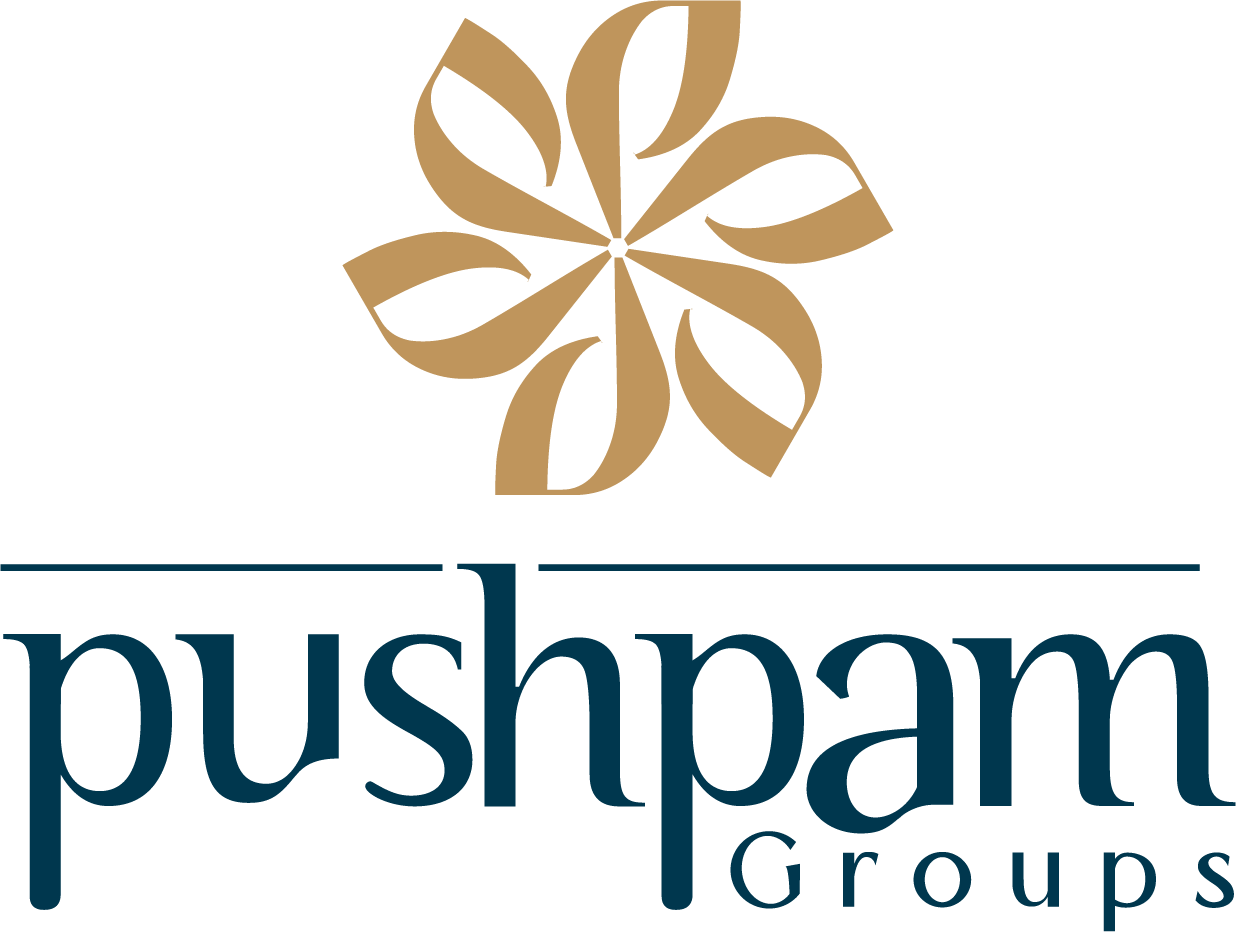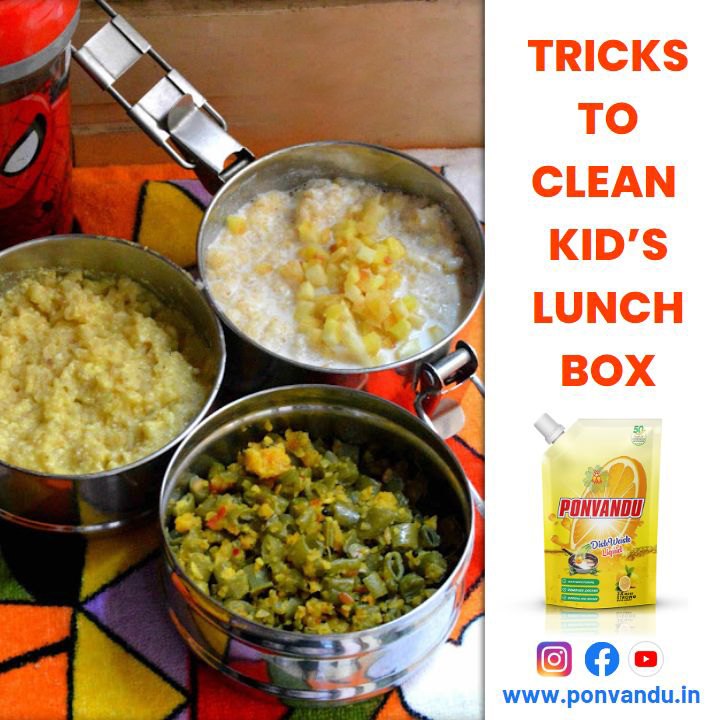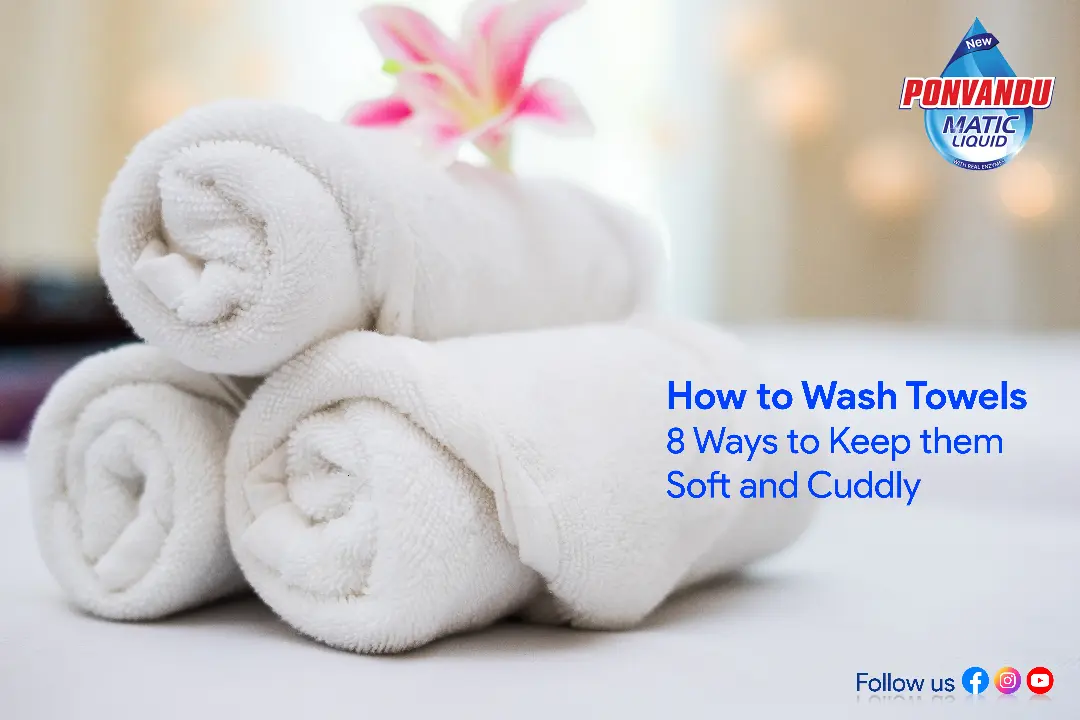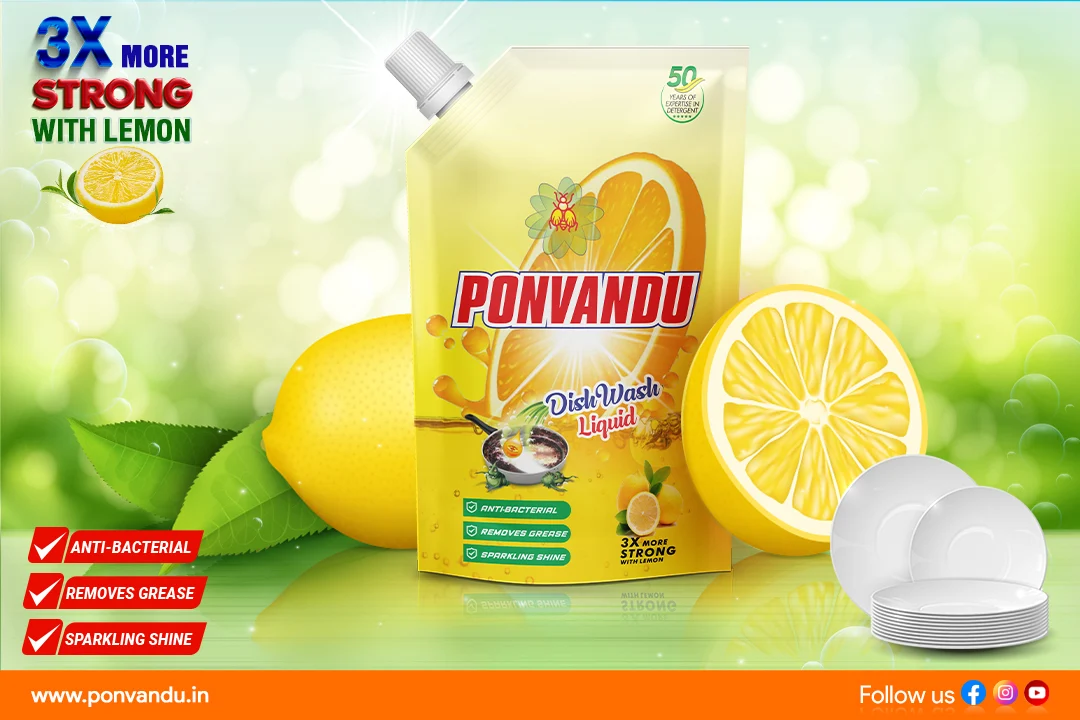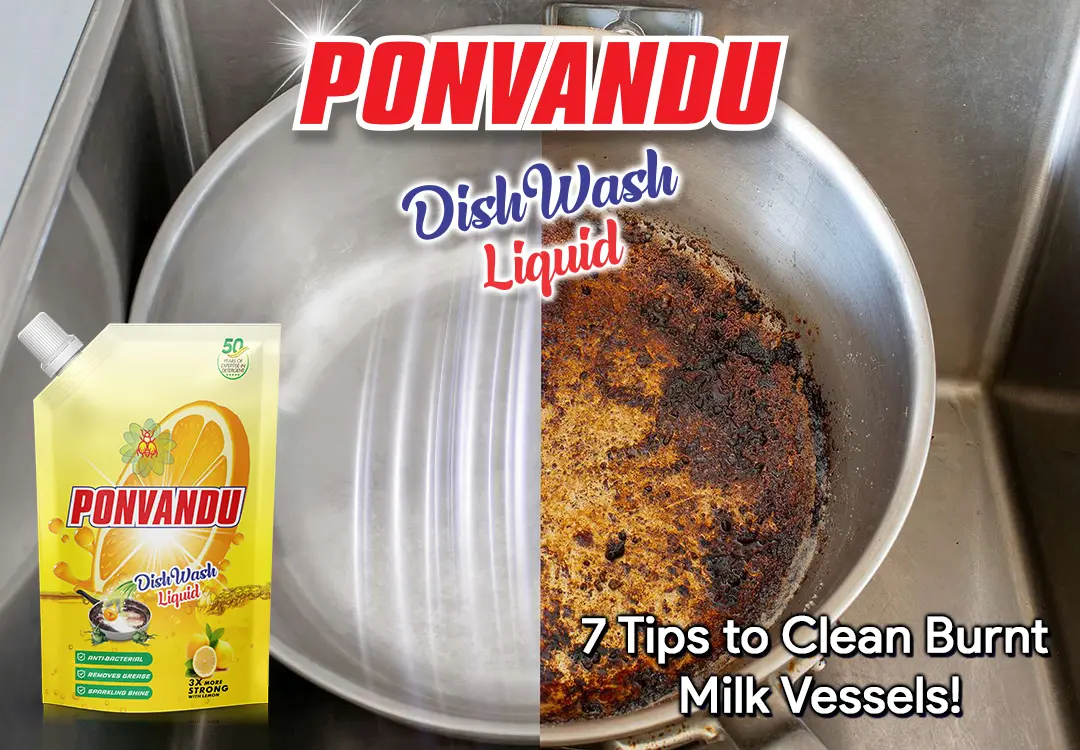Cleaning your child’s lunch box is a crucial aspect of maintaining good hygiene and keeping your child healthy. With regular use, lunch boxes can accumulate food stains, smells, and germs that can be harmful to your child’s health. In this article, we will share some tricks to help you clean your child’s lunch box effectively and get rid of stains and smells.

Introduction
At Ponvandu Dishwash Liquid, we understand the importance of keeping your child’s lunch box clean and hygienic. With our tips, you can easily clean your child’s lunch box without using harsh chemicals or damaging the container.
The things you need to clean your lunch box:
Before we get started, let’s make sure we have all the materials we need to clean the lunch box effectively. You will need:
- Warm water
- Dishwashing soap
- White vinegar
- Baking soda
- Sponge or soft-bristled brush
- Paper towel
Step-by-Step Guide
Follow these steps to clean your child’s lunch box and get rid of any stains or smells:
Step 1: Empty the lunch box
Before cleaning the lunch box, make sure it is empty. Remove any leftover food, crumbs, or wrappers from inside the box.
Step 2: Wipe the lunch box with a damp sponge
Using a damp sponge or soft-bristled brush, wipe the inside and outside of the lunch box. Make sure to remove any food particles or debris that may be stuck to the container.
Step 3: Apply dishwashing soap
Next, apply a small amount of dishwashing soap to the sponge or brush and wipe the inside and outside of the lunch box again. Use warm water to rinse off any soap residue.
Step 4: Use vinegar to remove stains
If there are any stains on the lunch box, apply some white vinegar to the affected area and let it sit for a few minutes. Then, wipe the area with a damp sponge or brush.
Step 5: Sprinkle baking soda to remove smells
If your lunch box has an unpleasant smell, sprinkle some baking soda inside the box and let it sit for a few hours or overnight. Then, wipe the baking soda off with a paper towel.
Step 6: Air dry the lunch box
After cleaning the lunch box, let it air dry completely before using it again. Avoid putting the container away while it is still wet, as this can lead to mold or bacteria growth.

Conclusion
With these simple tricks, you can keep your child’s lunch box clean and hygienic. Regular cleaning of the lunch box can help prevent the growth of harmful bacteria and keep your child healthy. For more tips on cleaning and hygiene, visit our website.
